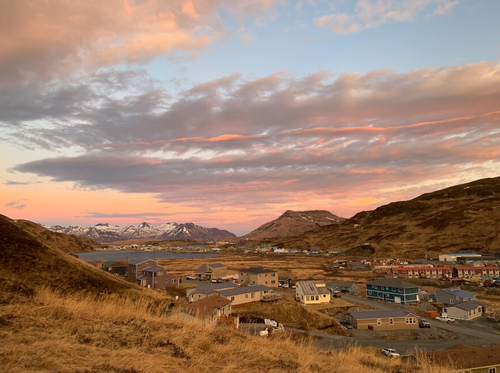After Warmest Christmas On Record, Alaska Braces For ‘Biblical Rains’
At a moment much of the southern United States experienced an unusually warm Christmas, with temperatures in Texas over the past days staying in the 70’s and even reaching into the 80’s, Alaska in the far north near the Arctic Circle has seen its own records smashed in terms of abnormally warm temperatures.
On Sunday, the day after Christmas – The Hill describes that “Kodiak Tide Gauge recorded 67 degrees on Dec. 26, while the Kodiak Airport recorded 65 degrees.” That’s a whopping 9 degrees higher than what’s ever been recorded at any point in December.
The National Weather Service in Anchorage issued a statement on Monday, saying that “In addition to setting a statewide record, Kodiak obliterated the daily record by TWENTY degrees.” Some places saw their warmest Christmas day on record. “Temperatures in Unalaska soared to 56 degrees on Saturday. That topped the prior Christmas Day record of 55 degrees set in the Southeast Alaska community of Metlakatla in 2009,” local KUCB station reported.
Further the data shows “It is the warmest temperature on record for anytime between October 5th and April 21st.” But like much of the rest of the nation, temperatures are expected to plunge by the end of the week.
The unusual temperature, which one scientist at the Alaska Center for Climate Assessment and Policy called “absurd”, is expected to wreak havoc on roads across the state, especially in the Alaska interior, given what’s typically a dry month of December has turned to conditions that could unleash “biblical rains”.
“Normally, December is a dry month in interior Alaska because the usually frigid air cannot hold much moisture, The Guardian observes. “Whatever moisture does flow in tends to be ‘the more fluffy powder because the air is nice and cold’, said [Rick] Thoman, who lives in Fairbanks.” Unusually high moisture now falling in many places as rain will soon be subject to rapid freeze. Precipitation on roads has already begin freezing as thick sheets of ice as opposed to the easier to handle and remove snow.
This is berserk. Kodiak, Alaska hit 65 degrees today, 20 DEGREES warmer than their previous record.
Not their average. Their record.
That’s like winning a 5K by ten minutes. Numerous nearby stations recorded similar.
Warmest winter temperature on record. @FOX5DC @MyRadarWX pic.twitter.com/az0meU3LL6
— Matthew Cappucci (@MatthewCappucci) December 28, 2021
Here’s how Alaska’s Department of Transportation described the situation in a Monday tweet:
“Roads across the Interior & Fairbanks are covered in ice. So now what? Ice is extremely difficult to remove once it has binded to the road surface.”
“Even though air temps were warm during #icemageddon2021, roads were at sub-zero temps, which caused ice to bind to the surface.”
Further the department warned Alaskans that there won’t be a “quick fox for ice-covered roads” and that hazardous conditions are like to remain until temperatures warm enough to melt the surfaces.
Tyler Durden
Wed, 12/29/2021 – 22:30
via ZeroHedge News https://ift.tt/3ECv0NR Tyler Durden
